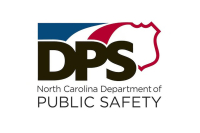Navy’s top 10 reasons for choosing Site C
The Navy has decided that a site in Washington and Beaufort counties in eastern North Carolina, about three to five miles from Pocosin Lakes National Wildlife Refuge, is the ideal spot for an Outlying Landing Field (OLF) where its pilots can practice simulated carrier landings in their new super Hornet aircraft.
This site has been chosen despite the fact that it is opposed by the local farmers whose lands would be taken through imminent domain; despite the fact that it is opposed by the county governments of Washington and Beaufort counties; despite the fact that Pocosin Lakes was established as an inviolate wildlife refuge and that it is the premier wintering ground for tundra swans and snow geese (about 100,000 annually) in the Atlantic Flyway; despite the fact that it is opposed by the U.S. Fish and Wildlife Service; despite the fact that it is opposed by the N.C. Wildlife Resources Commission; despite the fact that it is opposed by the governor of North Carolina, both of the state’s senators and the majority of it’s representatives; and despite the fact that it is opposed by a majority of sportsmen, birders, nature enthusiasts and environmental and conservation organizations across the state of North Carolina and across the country.
But the Navy has done its homework and has come up with the top 10 reasons to site an OLF in Washington and Beaufort counties.
• Reason number 10: Birds don’t vote — it is easier to cut off food supplies, harass and poison birds than voters.
• Reason number 9: Noise pollution — the noise from practice landings at Fentress OLF in upscale Chesapeake County, Va., makes it hard for lobbyists to be heard over the rattle of ice cubes in their cocktails.
Related Items
• Reason number 8: Environmental concerns — between 30,000 and 40,000 people visit Pocosin NWR annually, the construction of an OLF with its increased noise pollution and the necessary removal of a significant portion of the waterfowl would likely result in a corresponding decrease in the number of visitors thus lessening the impact of the human footprint at the refuge and decreasing vehicle emissions.
• Reason number 7: Reduce the number of dangerous predators — black bear and the endangered red wolf are known to inhabit Pocosin, the jets would likely drive them away.
• Reason number 6: The need to stimulate creative thinking in the Navy’s rank and file — “Now we have to reverse engineer the whole process to justify the outcome,” reads an email from John Robusto, the Navy’s principal expert on operational matters regarding site C.
• Reason number 5: “... distance from public interest areas, and distance from wetland complexes,” from the U.S. Atlantic Fleet Public Affairs — a little over 3 miles from Pocosin Lakes.
• Reason number 4: Stupid farmers — by usurping 30,000 acres of farmlands around site C, the Navy could then dictate what farmers could or could not plant and get away from that outdated free market freedom of choice paradigm.
• Reason number 3: National security — “This OLF is very important to fleet readiness. The War on Terrorism and the way we will prepare and deploy carrier strike groups in the future demand that we maintain a much larger portion of the fleet in a surge-ready status,” said Admiral Natter.
“The existing airfields at Oceana, Cherry Point and Fentress don’t provide adequate capacity to do that in a way that is safe, responsive and sustainable. An additional OLF is essential to our ability to train our aircrews and surge our forces when directed by the Commander-in-Chief,” according to the U.S. Atlantic Fleet Public Affairs office.
“When the Navy performed Summer Pulse 2004, it tested the FRP [Fleet Response Plan] and the Navy claims it got 7 carriers deployed in the 30 days, one carrier over the required. No second OLF was needed for that in 2004. 2004 still had the F-14 in the inventory, more planes/squadron, etc. and yet was able to perform the plan,” according to the Albemarle Community Network
• Reason number 2: “... the Navy further concluded that the optimal location for the OLF was at Site C, which is fifty nautical miles from Cherry Point and seventy-two nautical miles from Oceana. The Navy chose Site C because it was roughly in between the two bases ...” from United States Court of Appeals — well they got us there, it actually is and you know how long it takes jets to travel 70 miles or so.
• Reason number 1: Because they want to — ?









